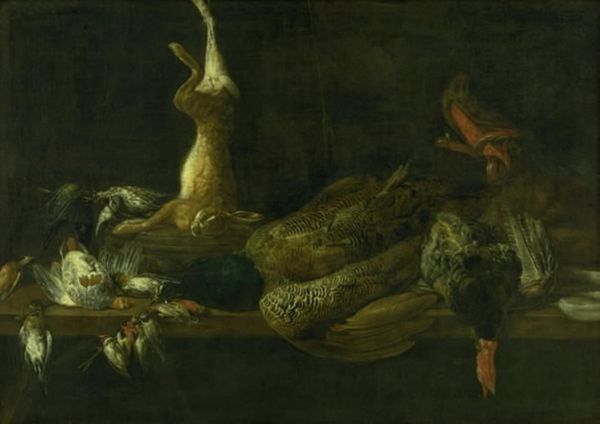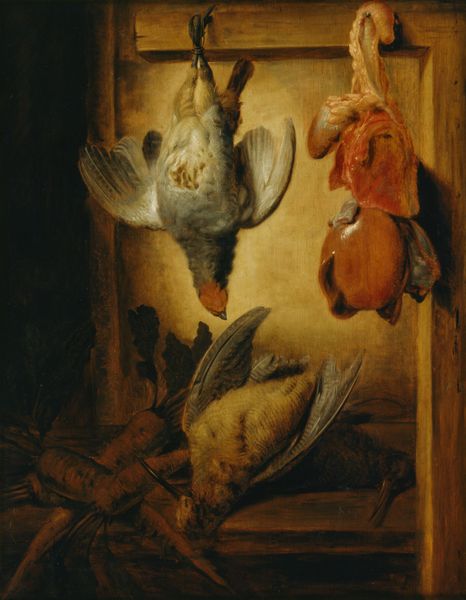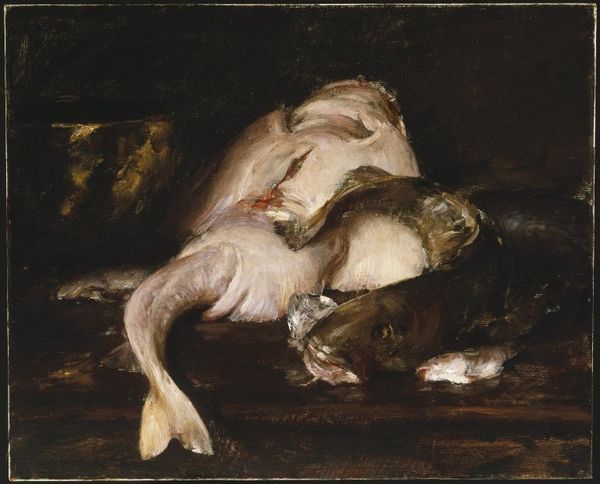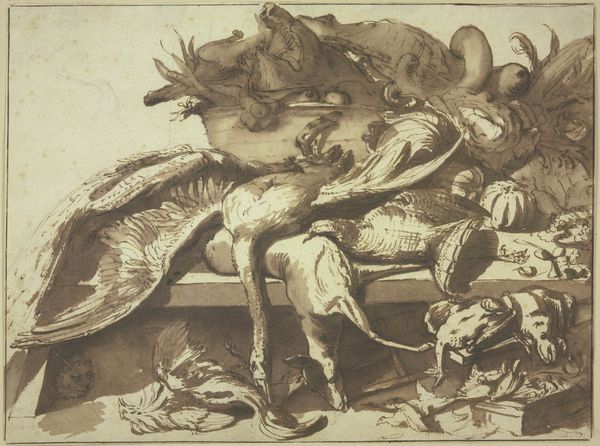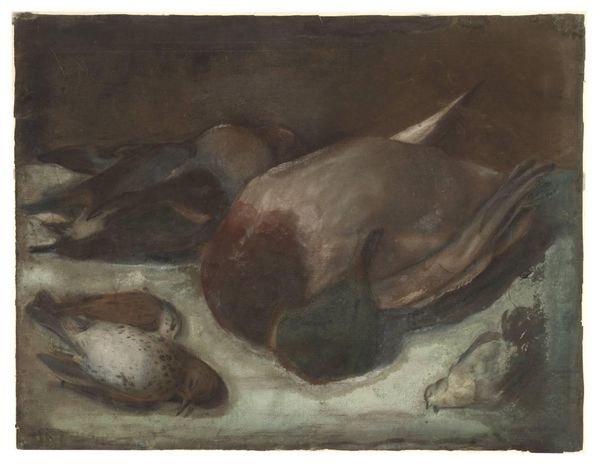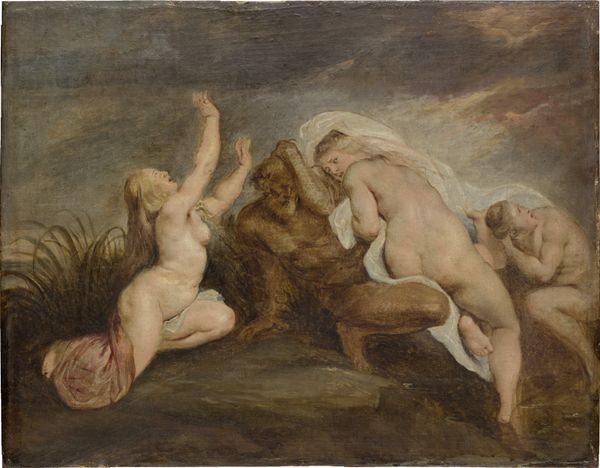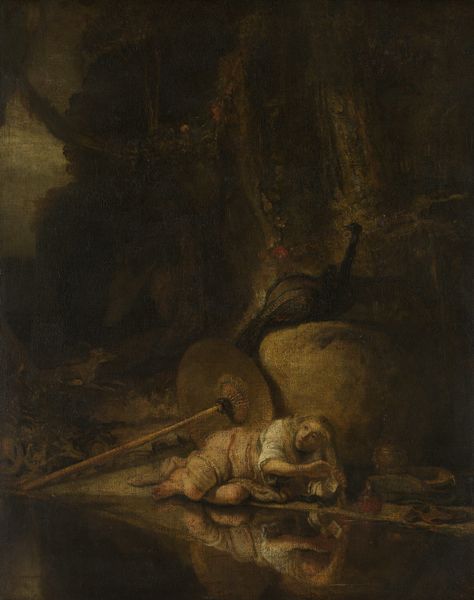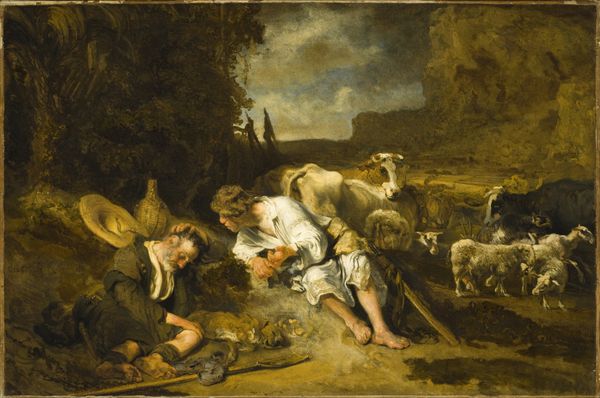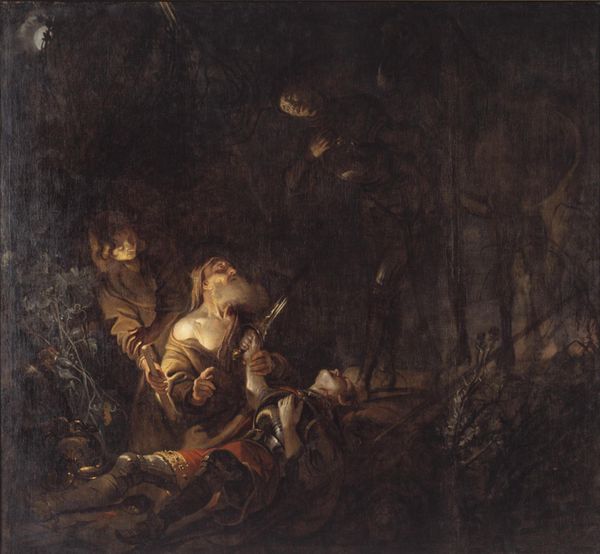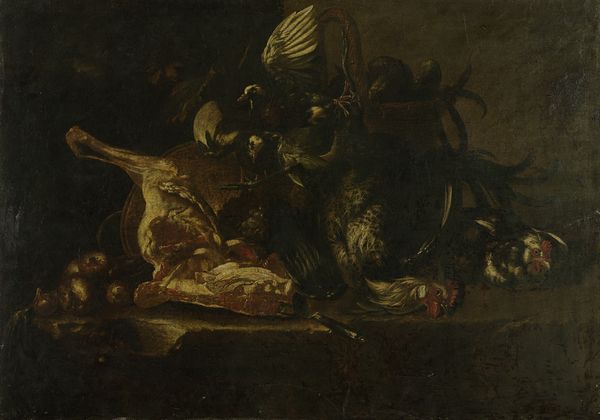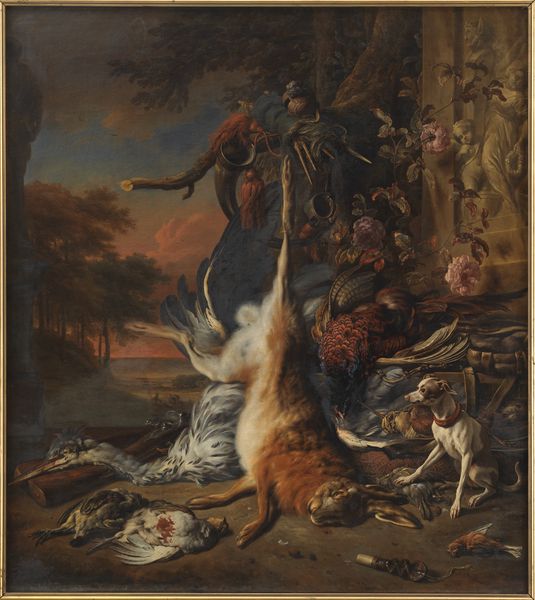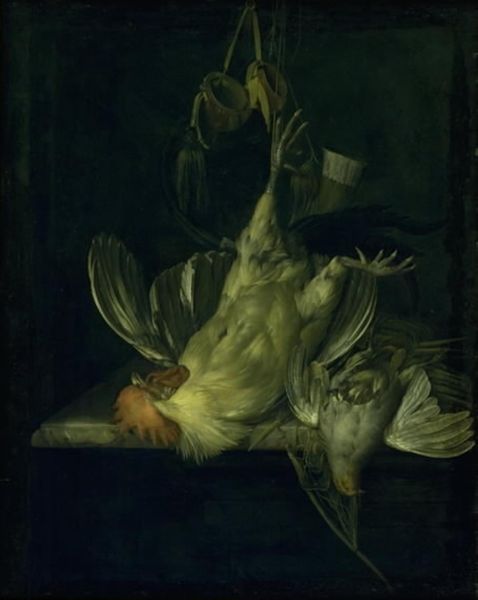
oil-paint, oil, canvas
#
baroque
#
oil-paint
#
oil
#
landscape
#
oil painting
#
canvas
#
genre-painting
Dimensions: 47.3 x 62.4 cm
Copyright: Public Domain
Curator: Jan Fyt’s “Still Life with Hunting Dog and Dead Fowl,” painted in 1647, offers us a fascinating tableau rendered in oil on canvas and currently residing at the Städel Museum. Editor: The immediate impression is one of slightly melancholic abundance. A sense of a fruitful hunt, yes, but tinged with mortality. The dog's gaze is particularly striking, filled with… longing? Or perhaps just expectation. Curator: Absolutely. Hunting scenes were quite popular, but Fyt imbues them with psychological depth. Dogs often symbolize fidelity and service. His attentive dog—clearly waiting for some signal from its master—reflects the human-animal relationship integral to the hunt, a crucial dynamic for the aristocracy and their social performance. Editor: The Baroque love of lavish detail is evident, too. Look at the plumage – each feather seems distinct. And the lighting – dramatic chiaroscuro— heightens the scene's tension. Is it meant to be celebratory, or cautionary? There is that single butterfly, an element seemingly incongruous. Curator: Well, consider the symbolic weight: dead game signals aristocratic prowess, providing for the table, whilst the butterfly as a symbol has ancient links to metamorphosis, the soul, or resurrection… the slain fowl will ironically soon also return to earth. This juxtaposition encourages us to contemplate the relationship between death, renewal, and our participation in the natural world. It presents us with questions of nature's inherent rhythms, our place, and impact in the cycle of life and death. Editor: I can see that reading, yes. I’m also struck by how this ‘genre-painting’ isn’t just about depicting the hunt, but perhaps implicitly interrogating its broader role and symbolism within a societal structure, specifically the power relations of that time. Were similar still lifes then acting as conversation pieces for a public reckoning with human involvement in nature? Curator: Certainly. Its creation, its place within collections both public and private: All served, and continue to serve, the development and distribution of cultural meaning. This scene presents a unique blend of ostentatious display and latent introspection that continues to captivate viewers. Editor: It makes me consider my own relationship with our treatment of the natural world, viewed through this painter's 17th century lens. A single glimpse into a loaded mirror across time.
Comments
No comments
Be the first to comment and join the conversation on the ultimate creative platform.
